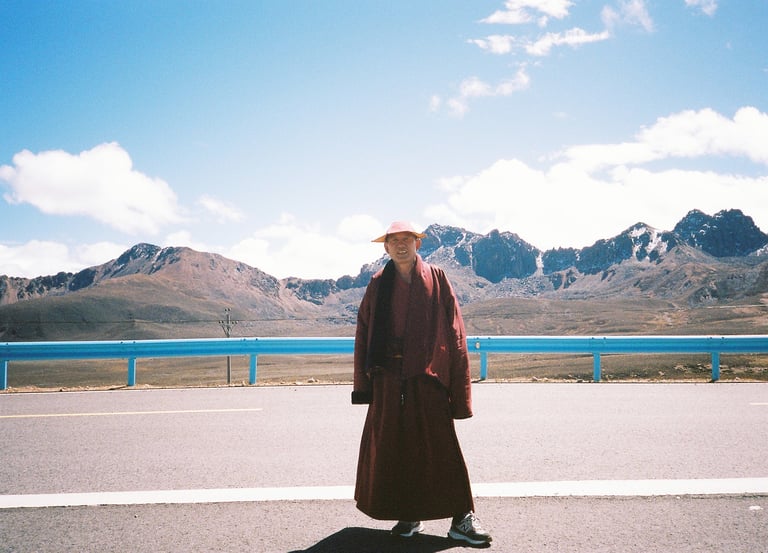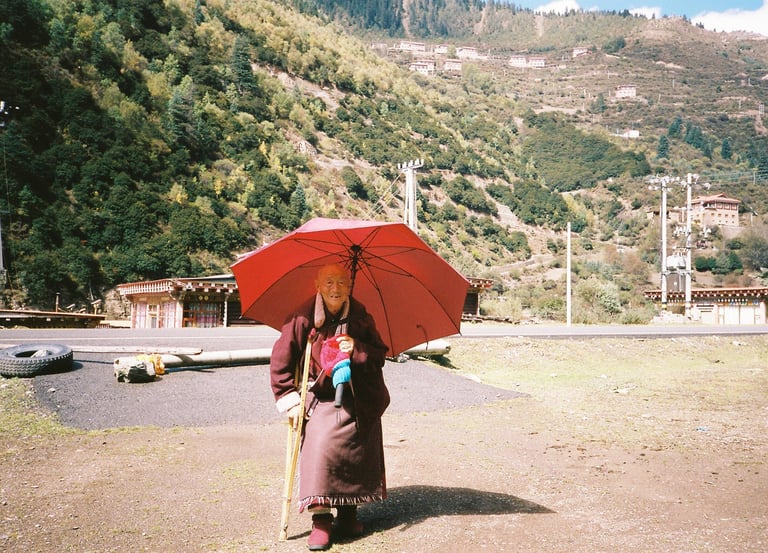Jaw-Dropping 9-Day Western Sichuan Road Trip
Discover the breathtaking beauty and rich culture of Western Sichuan in this travel guide. Join me on a 9-day road trip filled with stunning landscapes and unforgettable experiences in Sichuan.
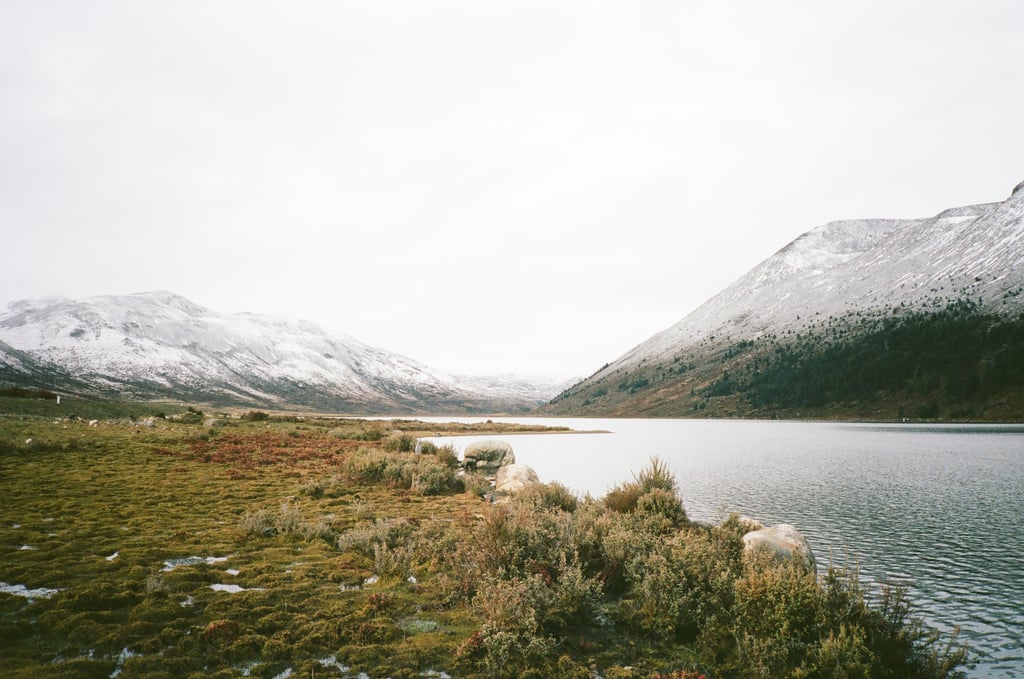

The Tibetan Plateau, a vast and awe-inspiring expanse of high-altitude landscapes, offers a truly unique travel experience. My recent road trip through the Plateau in Western Sichuan unveiled a breathtaking tapestry of natural wonders: snow-capped mountains piercing the sky, crystal-clear lakes reflecting their majestic peaks, vibrant meadows carpeted with wildflowers, and ancient monasteries clinging to cliffsides.
This journey was a also profound immersion into Tibetan culture, with encounters with nomadic herders, visits to sacred sites, and the chance to experience the tranquility of this remote and breathtaking region. A testament to the remoteness of this region, I did not encounter a single foreign tourist during my entire nine-day journey.
The first thing you'll ask yourself is, can I actually rent a car in China? It is indeed possible, and a relatively smooth process if you come well prepared. I wrote a dedicated step-by-step guide explaining how to rent a car as a foreigner in China (based on my experience in Chengdu).
Day 1 - Chengdu to Ya’an
As dusk settled, I finally collected my rental car in Chengdu and embarked on a two-and-a-half-hour drive west to the city of Ya'an. The highway journey was relatively uneventful, and I didn't get much of a glimpse of the city upon arrival as it was already dark.
I opted for the Yafu Hotel (145 CNY) for its convenient on-site charging stations for my electric vehicle, a valuable feature at this price point. Ya'an offers a wide variety of dining options, as one would expect in a Chinese city. I indulged in a delicious fried crab, a culinary highlight of my trip. The restaurant owners were incredibly hospitable, graciously offering me edamame and local tea.
Day 2 - Bifengxia Panda Reserve + drive to Xinduqiao
My decision to start my journey in Ya'an was primarily driven by its proximity to the Bifeng Gorge, home to one of Sichuan's renowned Panda Reserves. A scenic 30-minute drive through lush greenery along winding roads led me to the reserve.
Before visiting the Panda Reserve, I was under the impression that it was a dedicated center for panda conservation. However, a recent New York Times article raised concerns about the ethical practices of some Chinese panda reserves and breeding centers. This information may influence your decision on whether or not to visit. Personally, I would have reconsidered my visit had I read the article beforehand, and I therefore decided not to cover it on this blog. It's crucial to do your own research and make an informed decision based on your own ethical considerations.
After a quick lunch at a restaurant near the reserve, I continued my journey towards Xinduqiao, a charming town on the route to Litang. The five-hour drive offered stunning scenery, with a gradual altitude gain reaching 3300 meters. Unfortunately, the foggy conditions that day obscured the views from the mountain pass.
Xinduqiao marked my first encounter with Tibetan culture during this journey, offering a glimpse into the local way of life. The Tibetan influence was evident in the architecture and, to my delight, local cuisine. Later that evening, I stumbled upon a gathering of locals in a square that evening, engaging in a lively traditional dance performance. Many locals had brought their own chairs to watch the spectacle, creating a festive atmosphere.
When in Xinduqiao I had a pleasant stay in a private room at 夏桥院民宿, for a modest 120 CYN.
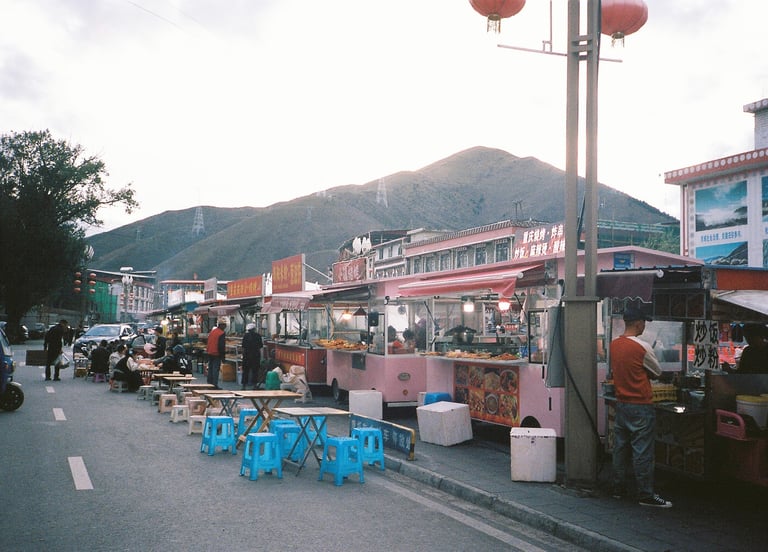

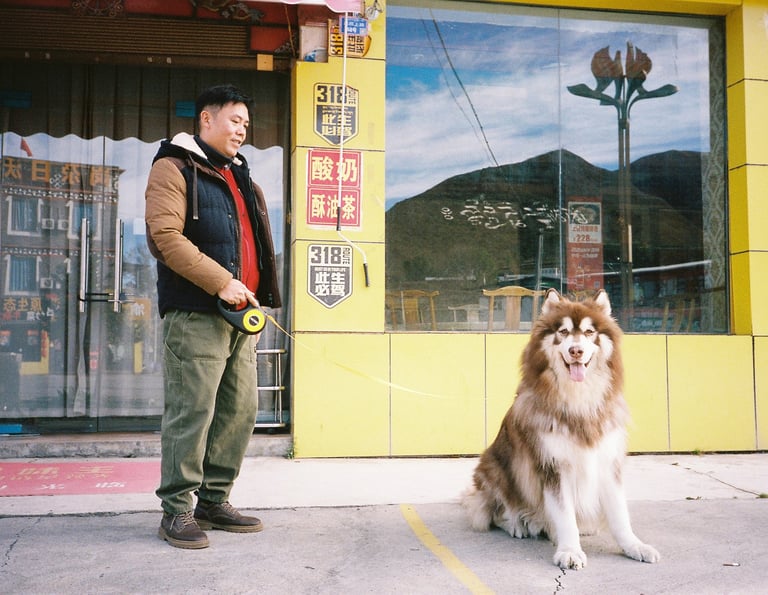

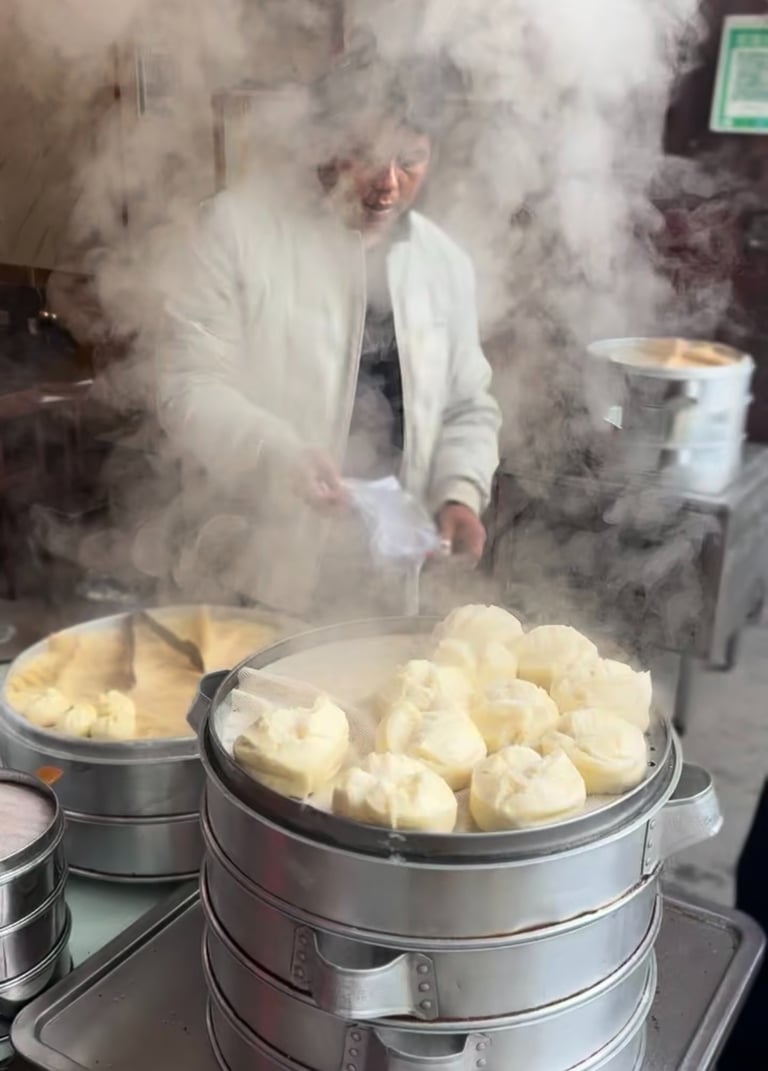

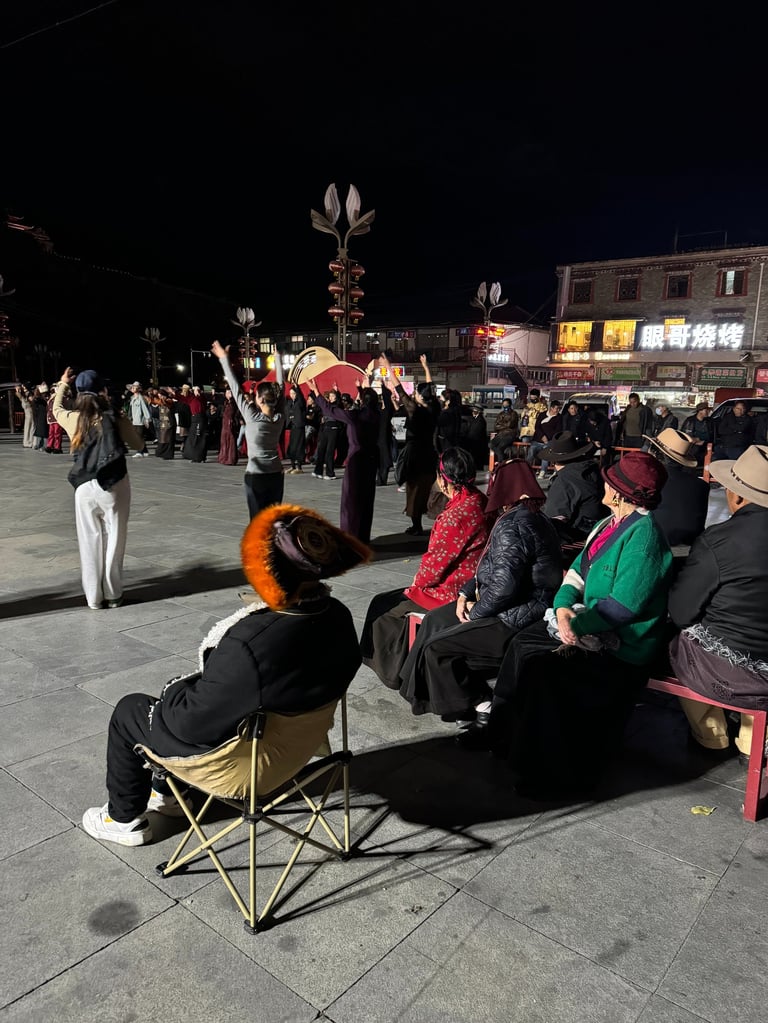

Day 3 - Xinduqiao to Litang
I set off early for Litang, anticipating a four-and-a-half-hour drive. Shortly after departing, I encountered a monk hitchhiking. Feeling compelled to help after my own hitchhiking experiences on the Pamir Highway, I offered the monk a ride. He was heading to a small village just before Litang, making for an unexpected and memorable detour. Although the language barrier limited our conversation, he proved to be a delightful travel companion, occasionally reciting religious mantras or gently drifting off to sleep.
The scenery continued to amaze me with each passing mile, prompting frequent stops to capture the breathtaking beauty of the Tibetan Plateau.
Upon reaching my monk companion's destination, I was warmly welcomed by his friends who insisted I join them for lunch. How could I refuse such a generous invitation? My table was quickly laden with bread, yak cheese, yak butter tea, and a generous supply of delicious yak and potato momos prepared by local women. They insisted on refilling my teacup and encouraged me to indulge in the generous feast, which I did with gusto until I felt (un)comfortably full.
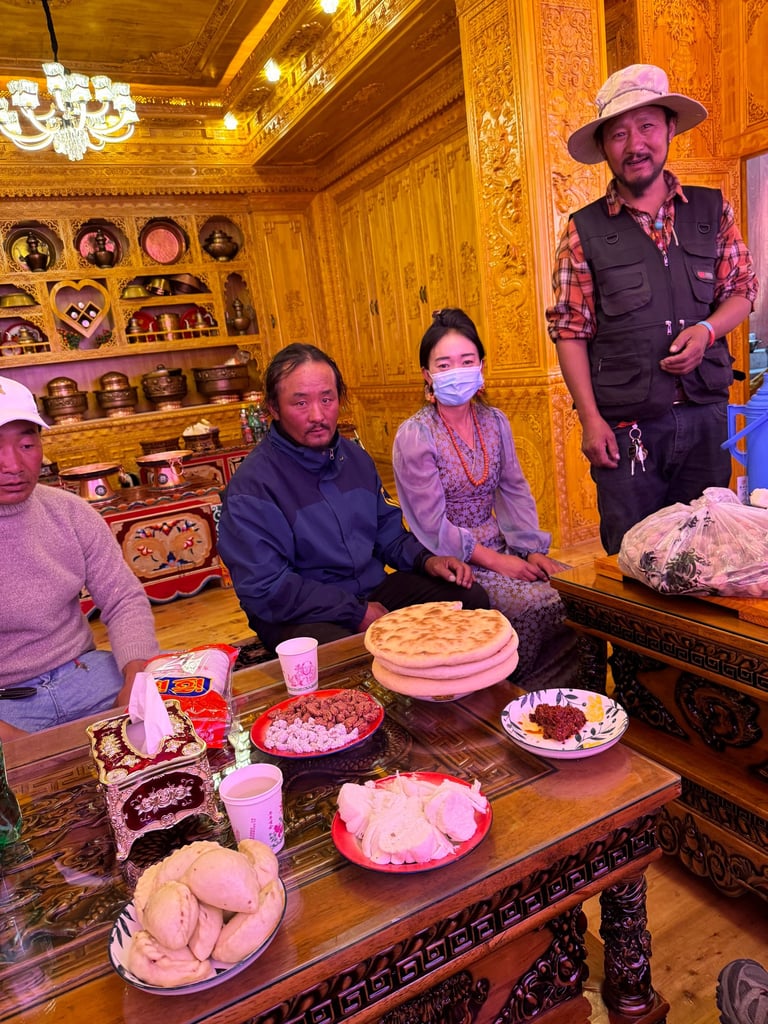

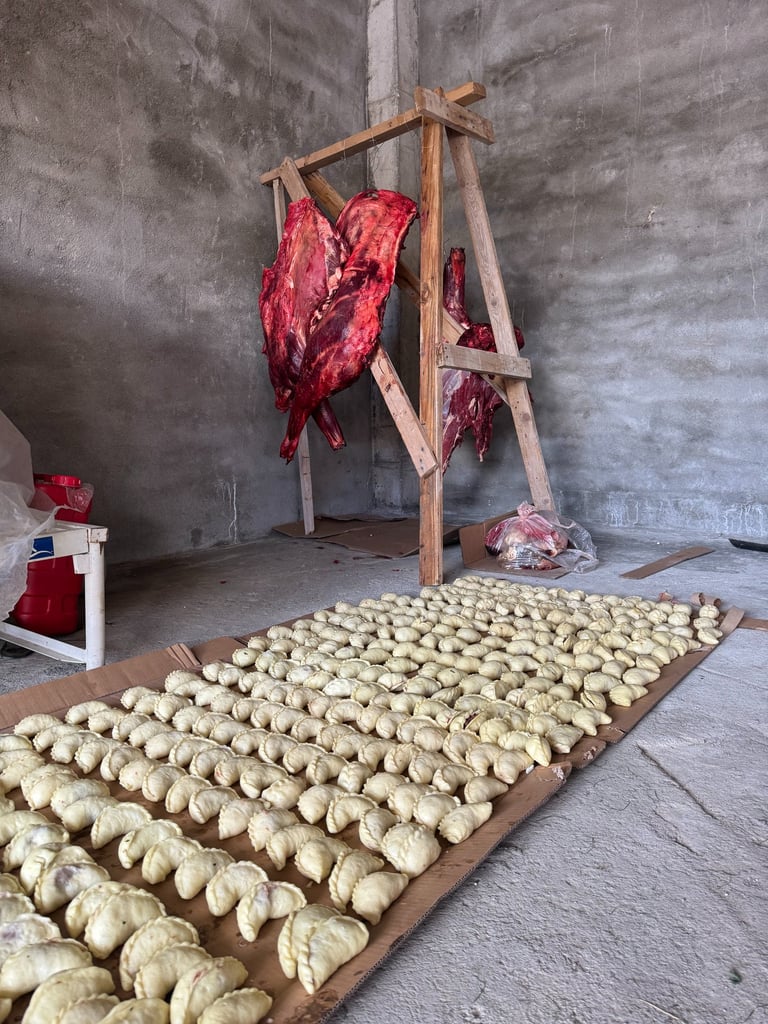

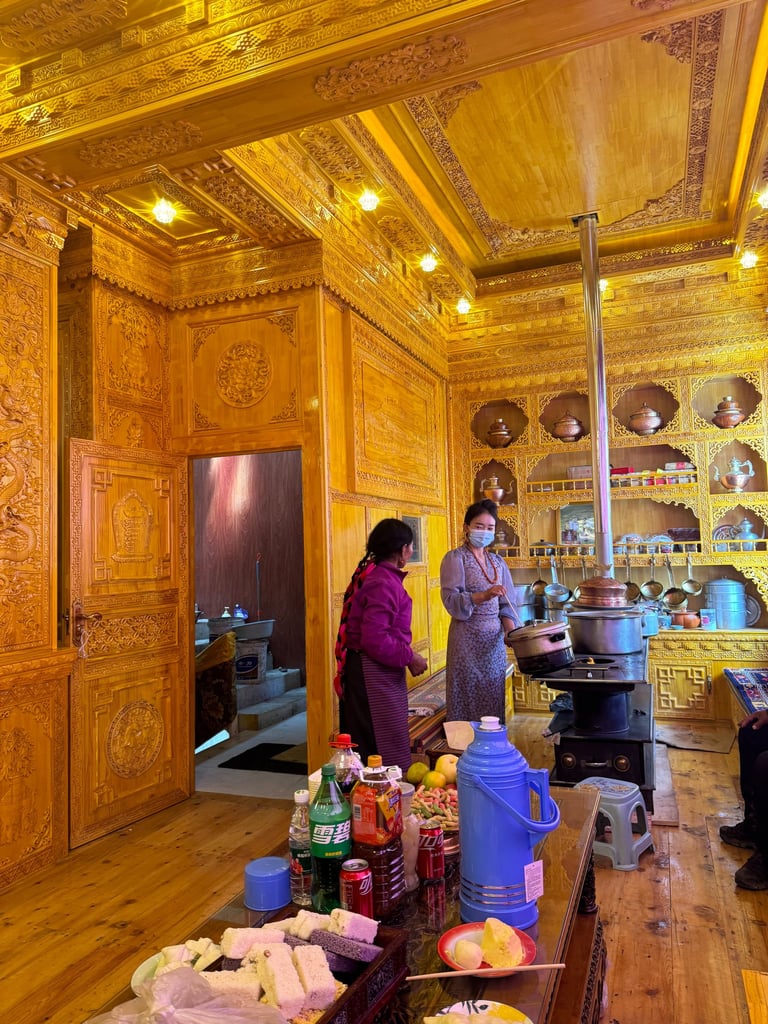

After a few photos with my newfound friends, I resumed my journey to Litang. Shortly after departing, I was stopped by a policeman. I initially braced for the worst, having read accounts of difficulties encountered by foreigners traveling through Tibetan Autonomous Prefectures. However, he simply requested a favor: a ride for one of his friends to Litang. so I had a co-pilot again 😇
Upon arriving in Litang, I checked into my hostel (Heavenly Crane -Tibet Lodge, 55 CYN)) before exploring the "old" and "new" parts of the town. While some areas of the old town have been somewhat commercialized, typical of many tourist destinations in China, Litang retains a unique charm. It was also amusing to observe some Chinese tourists carrying portable oxygen bottles, a reminder of the town's high altitude (around 4,000 meters).
Despite the commercialization, Litang offers a captivating atmosphere. I was particularly intrigued by the sight of locals going about their daily lives, often adorned in distinctive traditional attire.
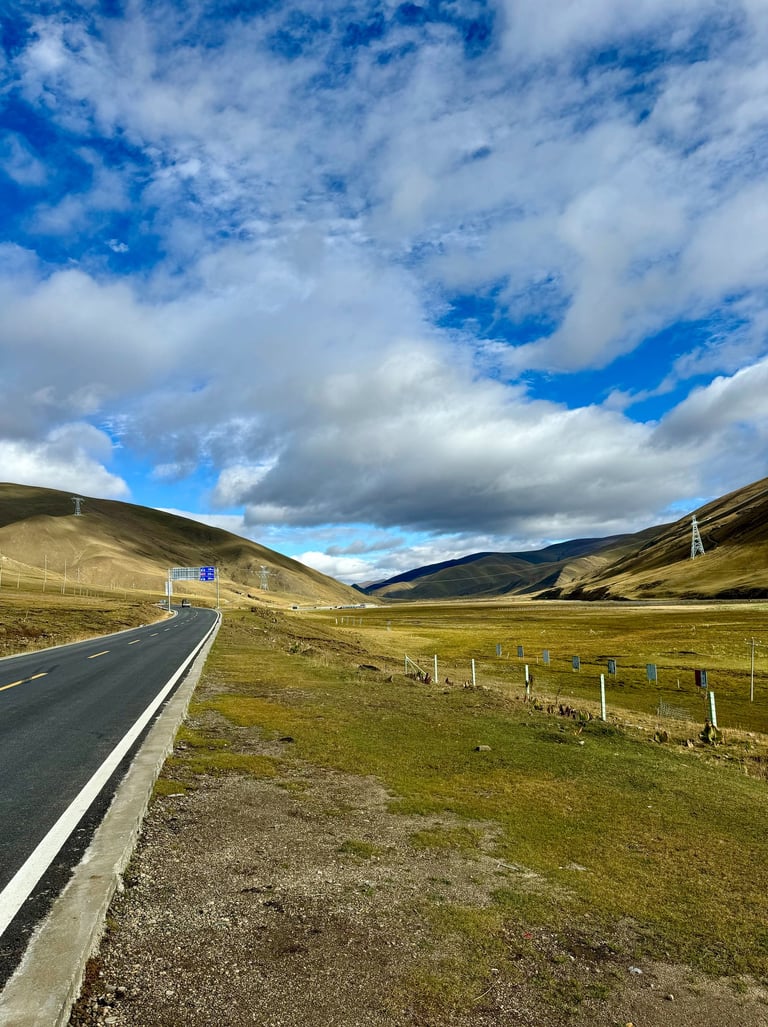

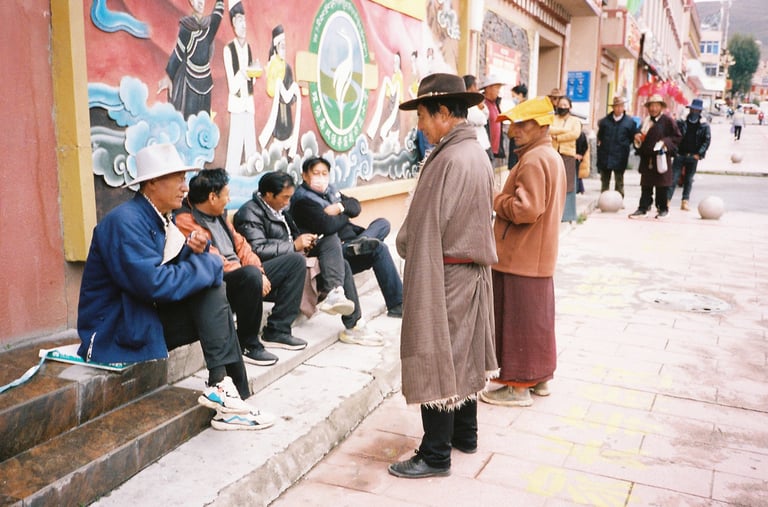

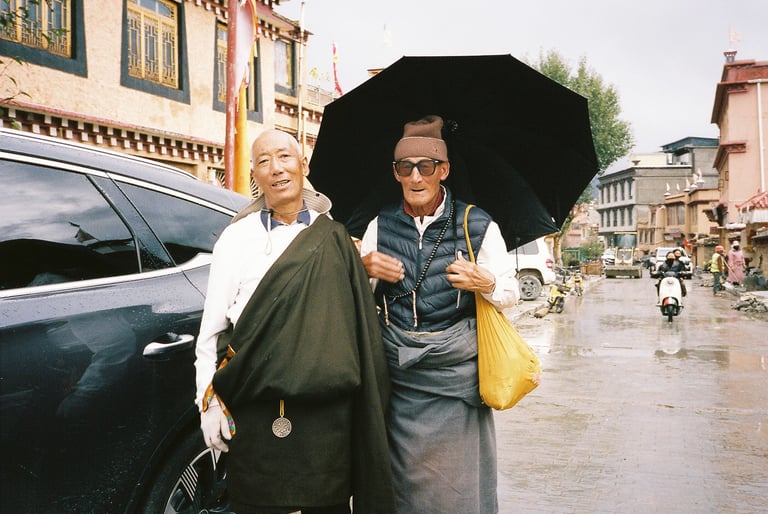

Day 4 - Litang to Yarchen Gar
!! UPDATE JULY 2025: SOME FOREIGNERS REPORTED BEING DENIED ACCESS TO YARCHEN GAR BY THE POLICE !!
The drive from Litang to Yarchen Gar was undoubtedly one of the most scenic, if not the most scenic, drives I've ever experienced. Vast golden plateaus, dense pine forests, and snow-capped mountains unfolded before me, creating a constantly shifting panorama that left me in awe. I must have stopped to capture the breathtaking views at least twenty times.
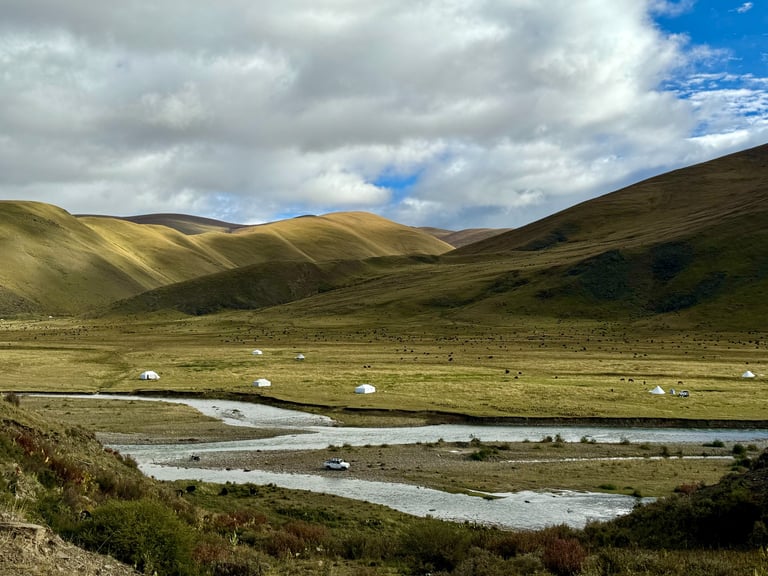

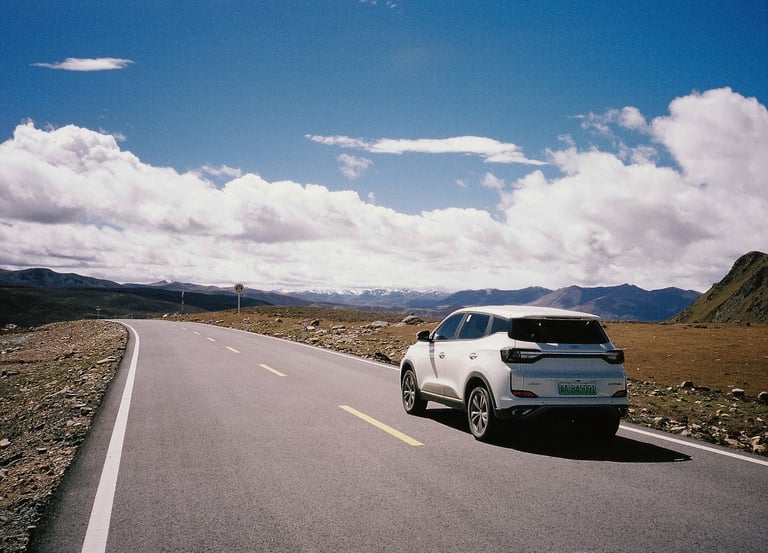



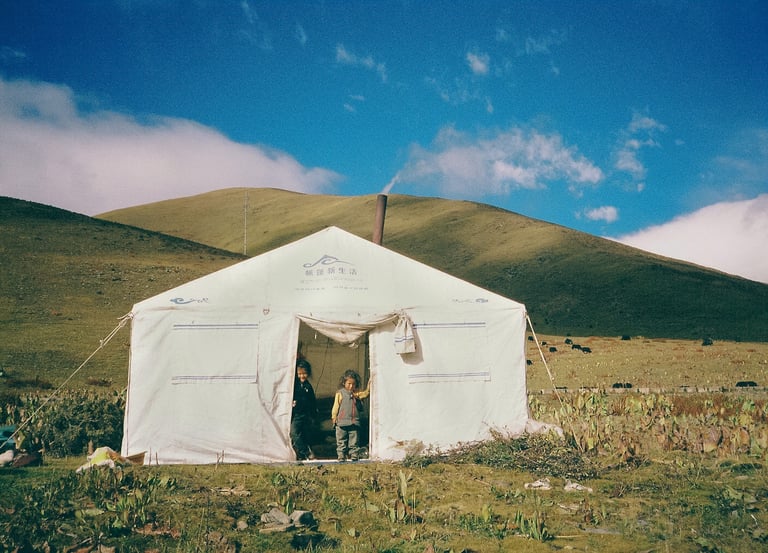

Yarchen Gar had captivated my imagination after reading several articles about it (for instance, here and here), and the reality surpassed even my heightened expectations. It is in fact one of the most surreal and fascinating places I have ever visited.
Yarchen Gar is a place where the soul feels both grounded and uplifted. As one of the largest Tibetan Buddhist communities in the world, it stands as a profound testament to devotion and simplicity. Thousands of modest wooden homes, each occupied by a nun or monk, dot the windswept plains, creating a mesmerizing landscape. An air of tranquility pervades the atmosphere as the community engages in prayer, meditation, and spiritual practice.
Unfortunately, Yarchen Gar also stands as a stark reminder of China's persecution of Tibetan communities. Chinese authorities have demolished nearly half of the nun's homes in recent years, detaining and evicting thousands of them. Many nuns have also reported being tortured and sexually abused in the patriotic "re-education centers" to which they were sent.
I spent nearly 24 hours in Yarchen Gar, simply wandering and observing the daily lives of the residents. I began by visiting the main monastery, where I spent an hour immersed in quiet contemplation. The rain began to fall, but it only added to the atmosphere of tranquility. The main temple is truly awe-inspiring in its scale and beauty, and I felt a profound sense of peace while exploring its vast interior.
After exploring the "city" and charging my car (the charging station within Yarchen Gar was unfortunately out of order), I checked into the 亚青宾馆 (180 CNY per night). The hotel was brand new and offered excellent value for the price. I dined at the hotel restaurant, enjoying a delicious vegetarian meal.
I highly recommend an early morning walk to witness Yarchen Gar awaken. This allows you to observe the daily routines of the young students and participate in the morning services at the various temples. The atmosphere in the early morning was truly magical and difficult to describe in words.
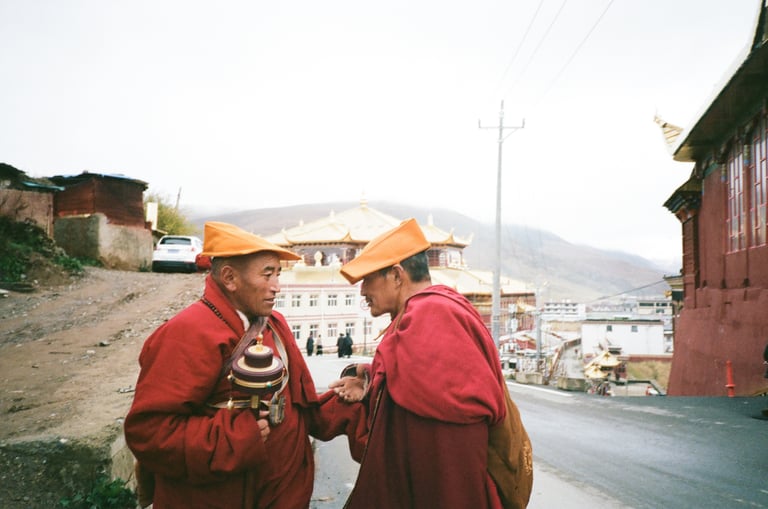

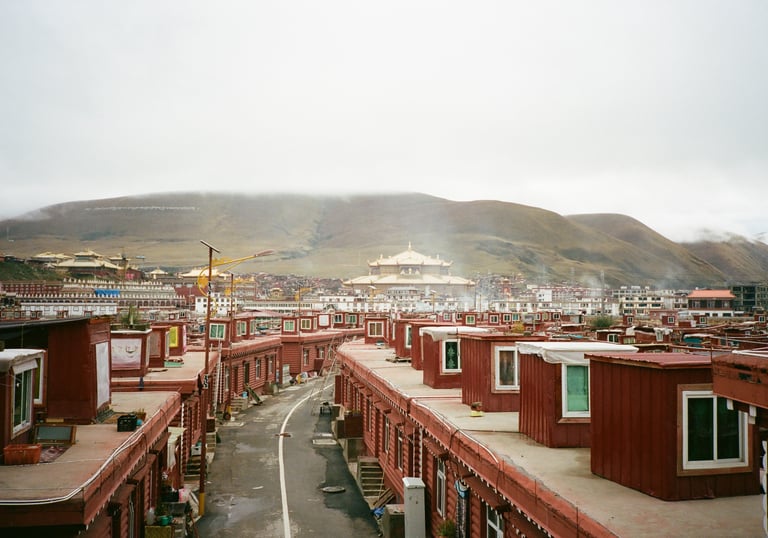

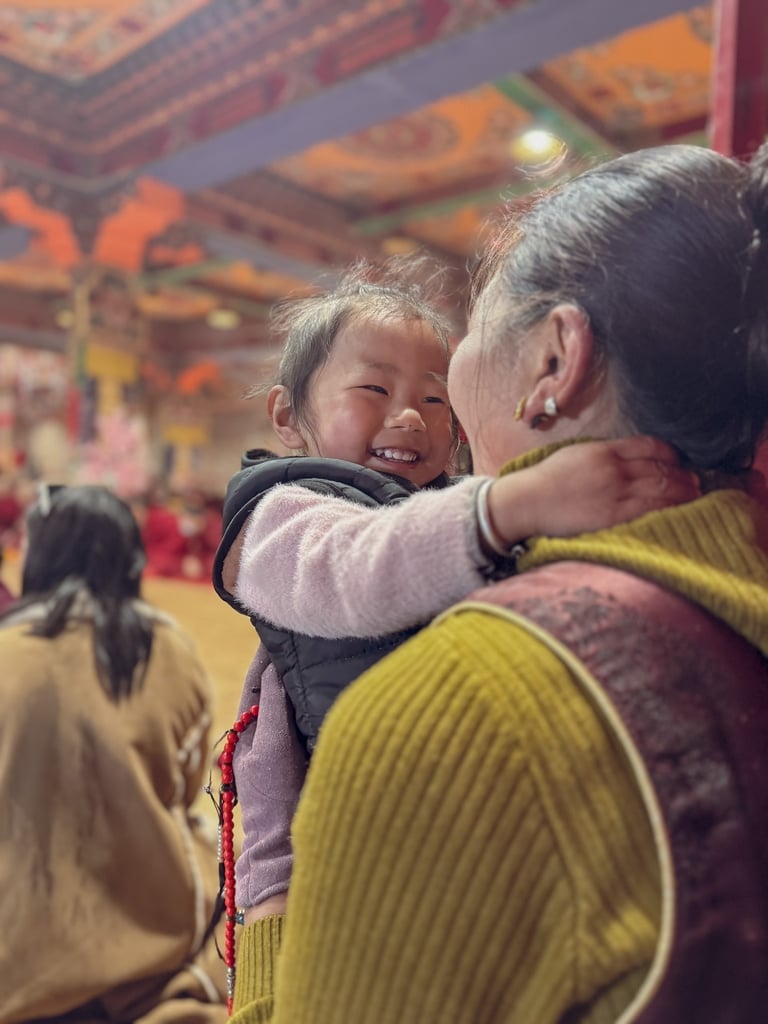

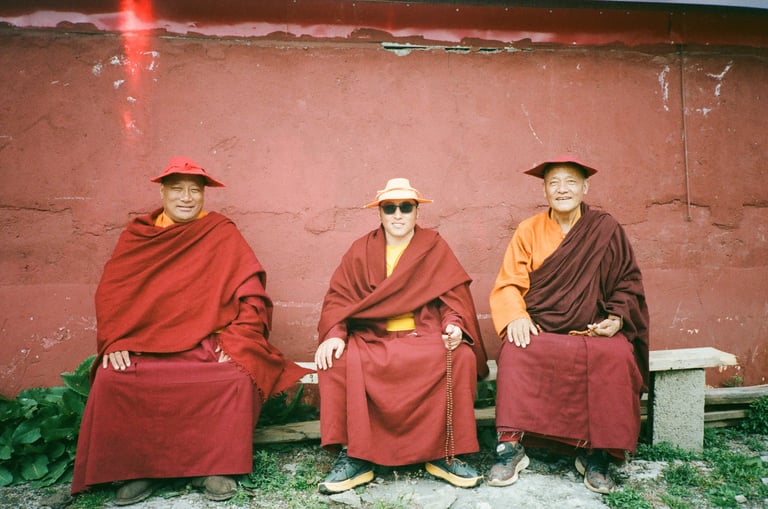

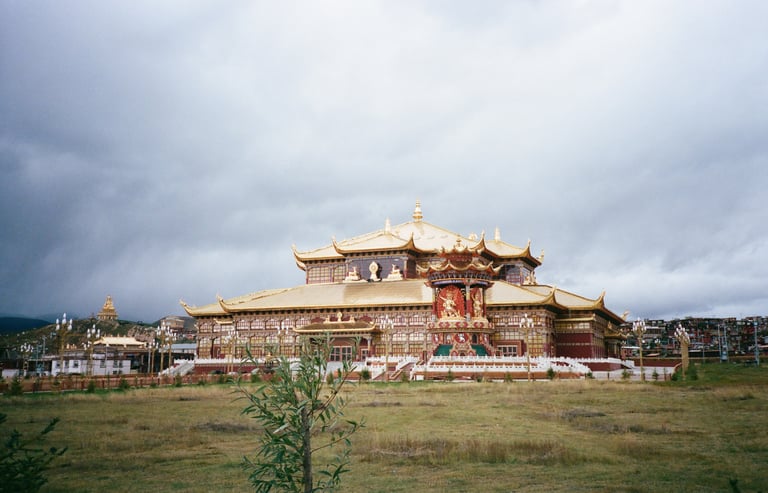

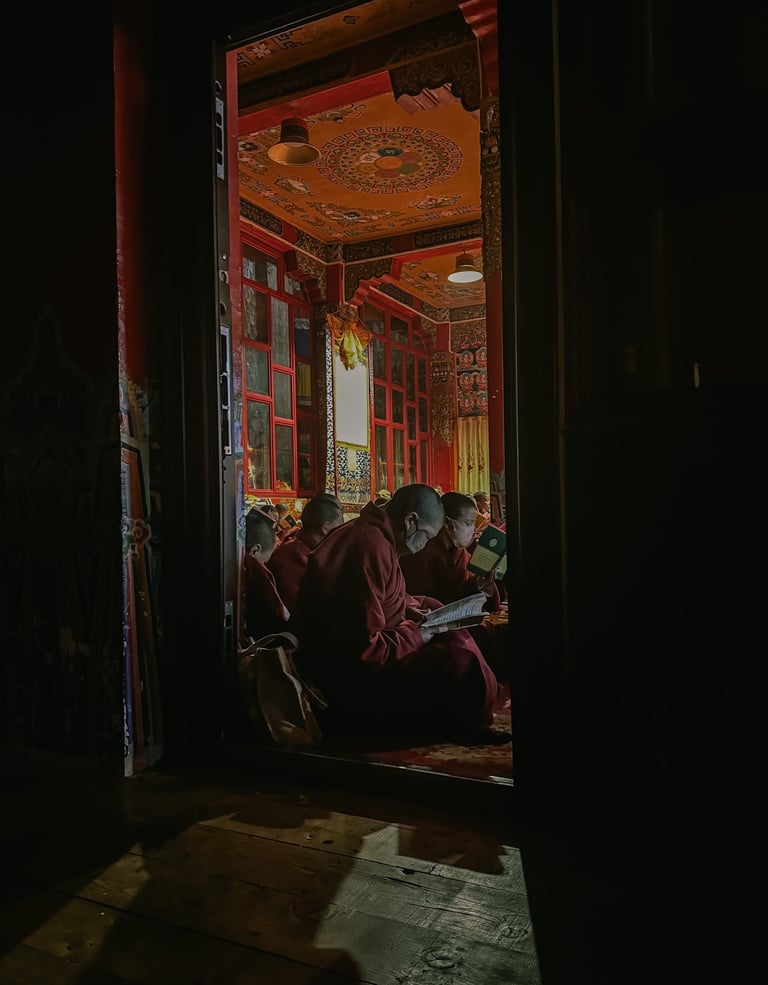

Before departing, I enjoyed a memorable lunch with a monk whom I had met earlier in the day. Despite the language barrier, we managed to communicate using a translation app, sharing smiles and stories. He was particularly delighted (i.e., started kissing my phone) when I showed him photos of the Dalai Lama's visit to Belgium. The kindness of the Tibetan people truly left a lasting impression on me.
No other place ever had such an emotional impact on me, leaving me with a strange sense of peace and wonder as I departed.
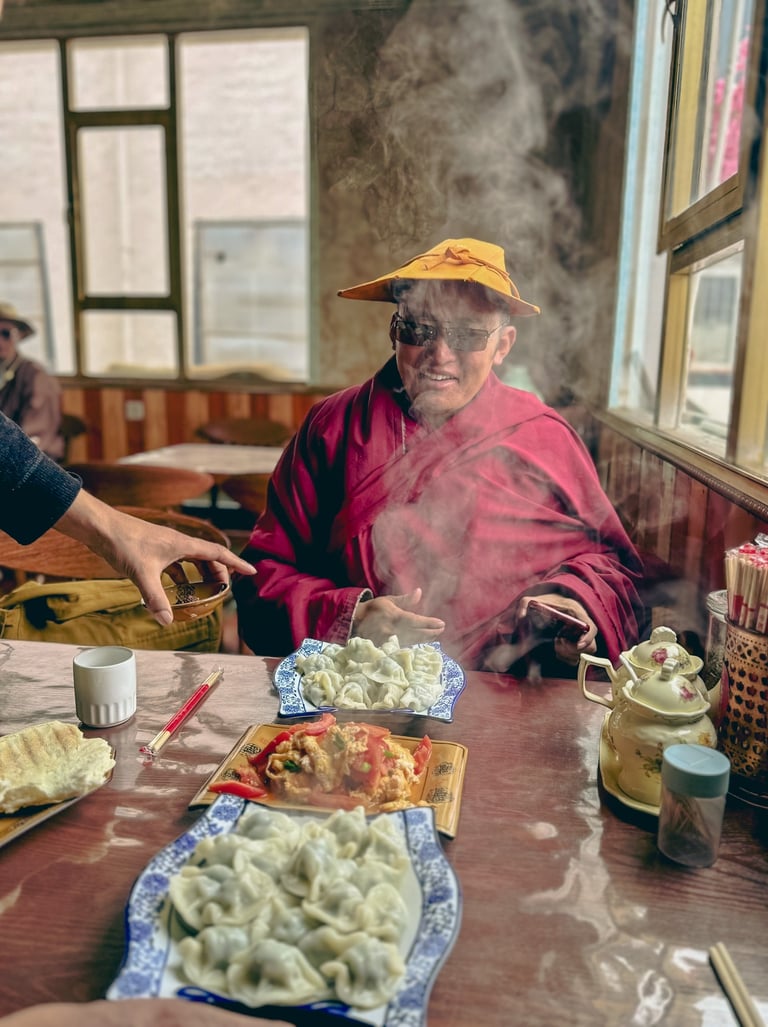

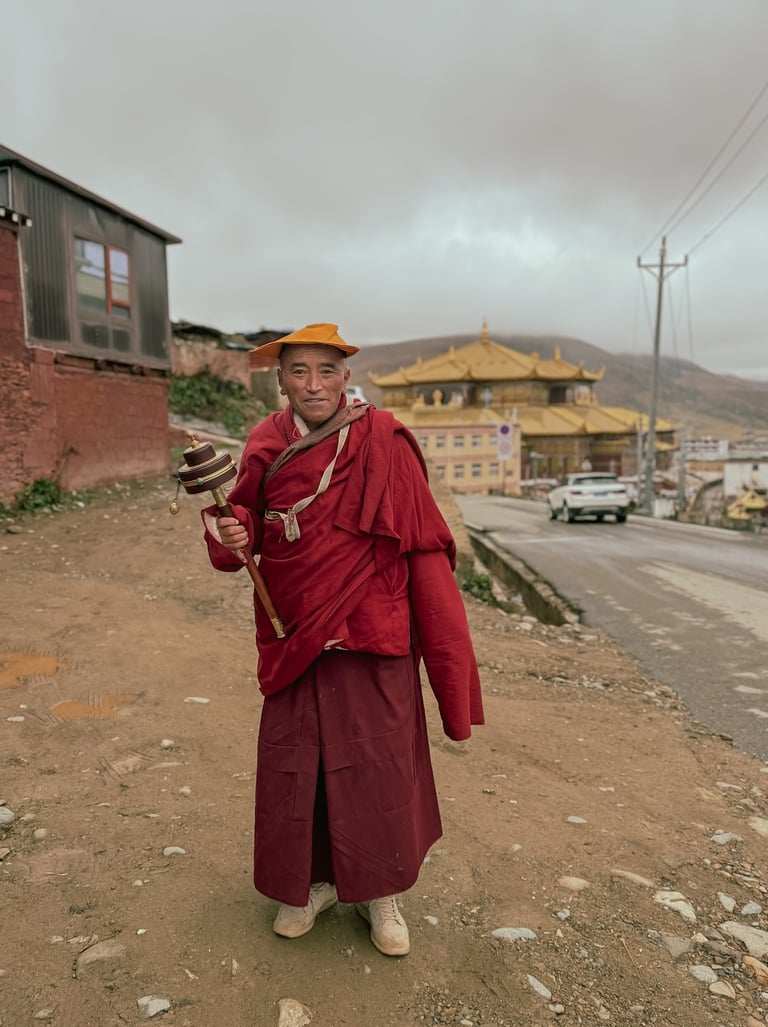

Day 5 - Yarchen Gar to Dege
My original plan was to travel from Yarchen Gar to the Dzongsar Valley. However, a misinterpretation of Google Maps - never ever rely on Google Map in China - led me astray, directing me towards Dzongsar Monastery in Dege, a detour of over two hours. Fortunately, Dege was actually my destination for the following day, so I simply adjusted my itinerary.
The drive to Dege was another highlight of the journey, with the scenery changing dramatically every 30 minutes. The drive notably went through a breathtaking mountain pass covered in snow, at 4,616 meters above sea level.
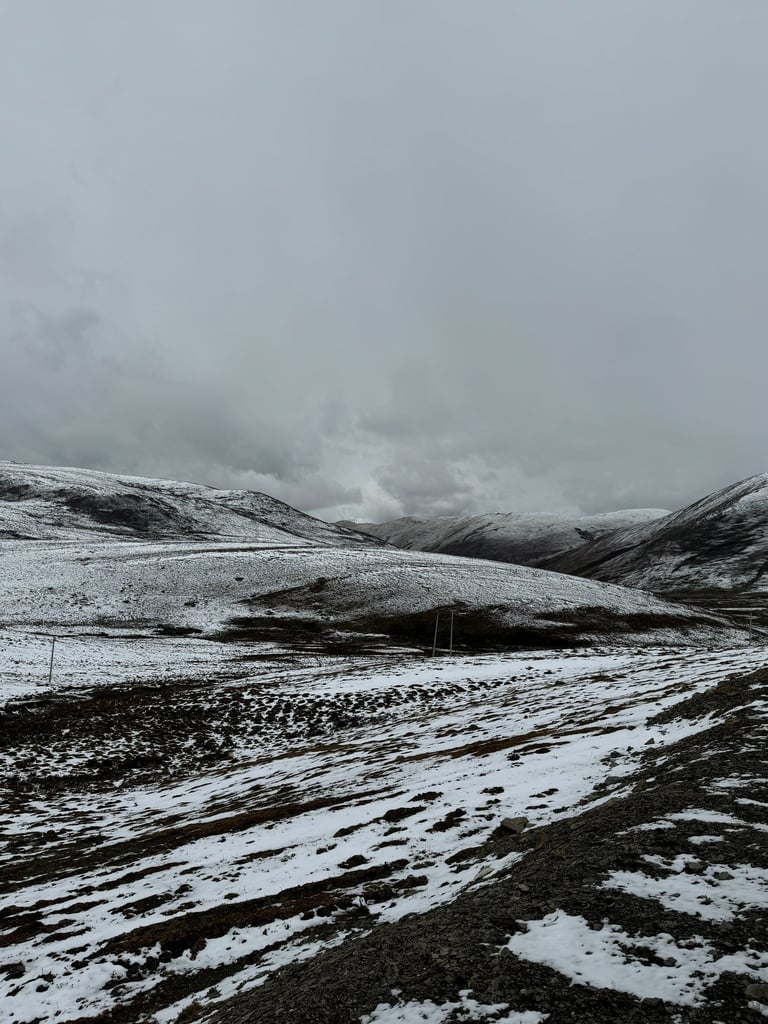

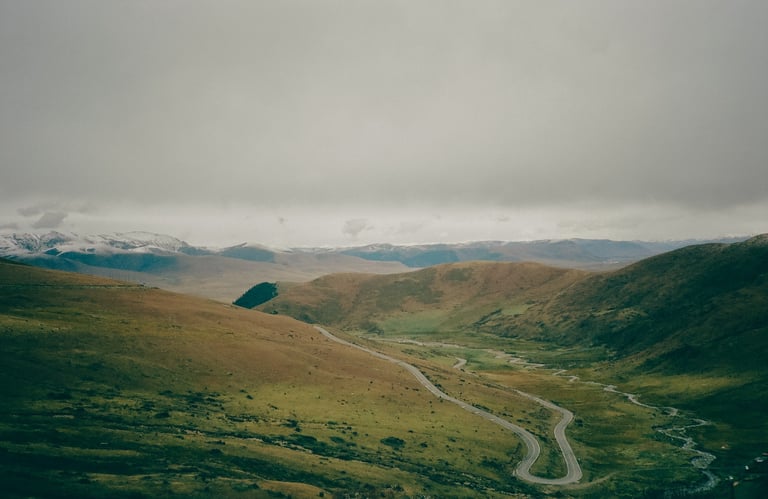

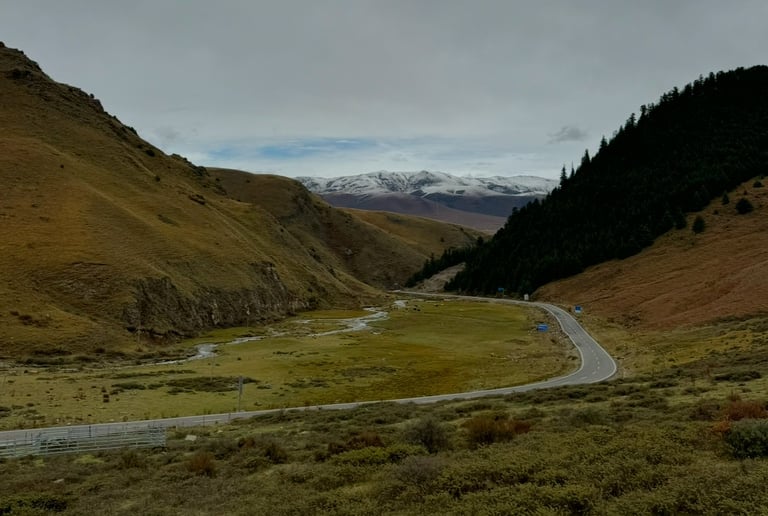

While Dege exhibited some signs of the "Disneylandization" that often affects tourist destinations in China, it still retained a unique charm. I spent the evening on the main square, where I once again witnessed locals of all ages gathering to dance to traditional music. I did join them for a dance this time, though it quickly felt a bit awkward trying to keep up with the intricate choreography while being filmed by countless smartphones. But seeing all generations coming up together and having a good time was another memorable experience, and a reminder of the vibrant community spirit that is often lacking in our own societies.
A must-visit in Dege is the UNESCO-listed Dege Sutra-Printing House. Witnessing the artisans meticulously hand-printing ancient religious texts using traditional techniques was a truly awe-inspiring experience. I had never encountered anything like it before (entrance to the printing house costs 100 CNY).
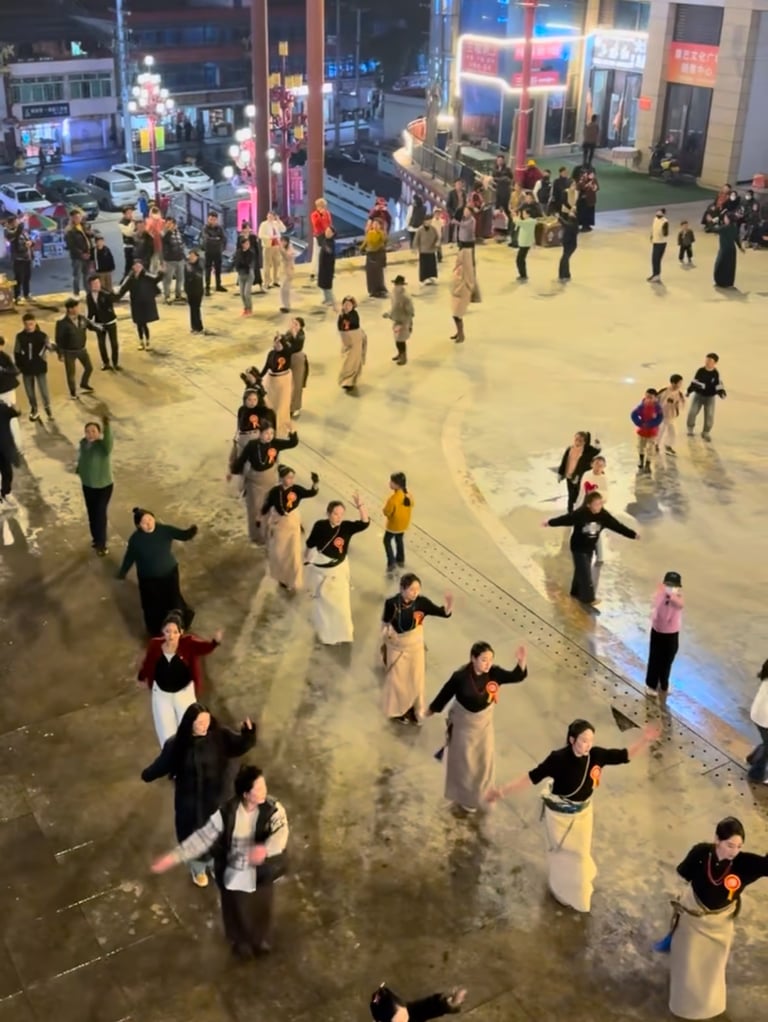

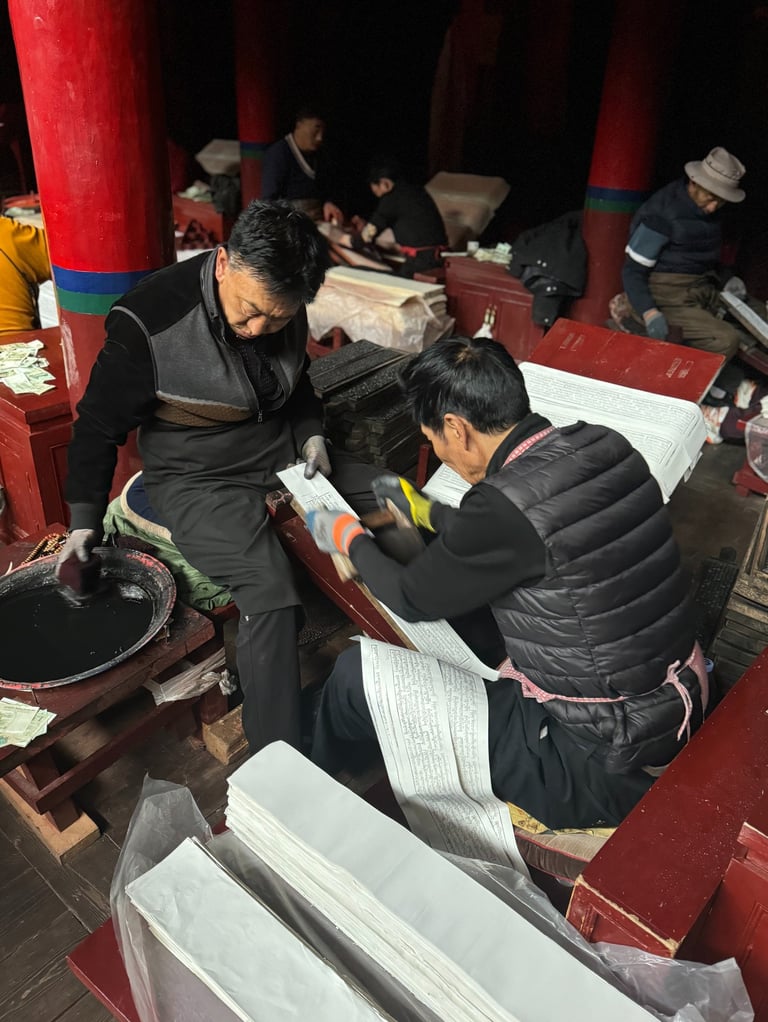

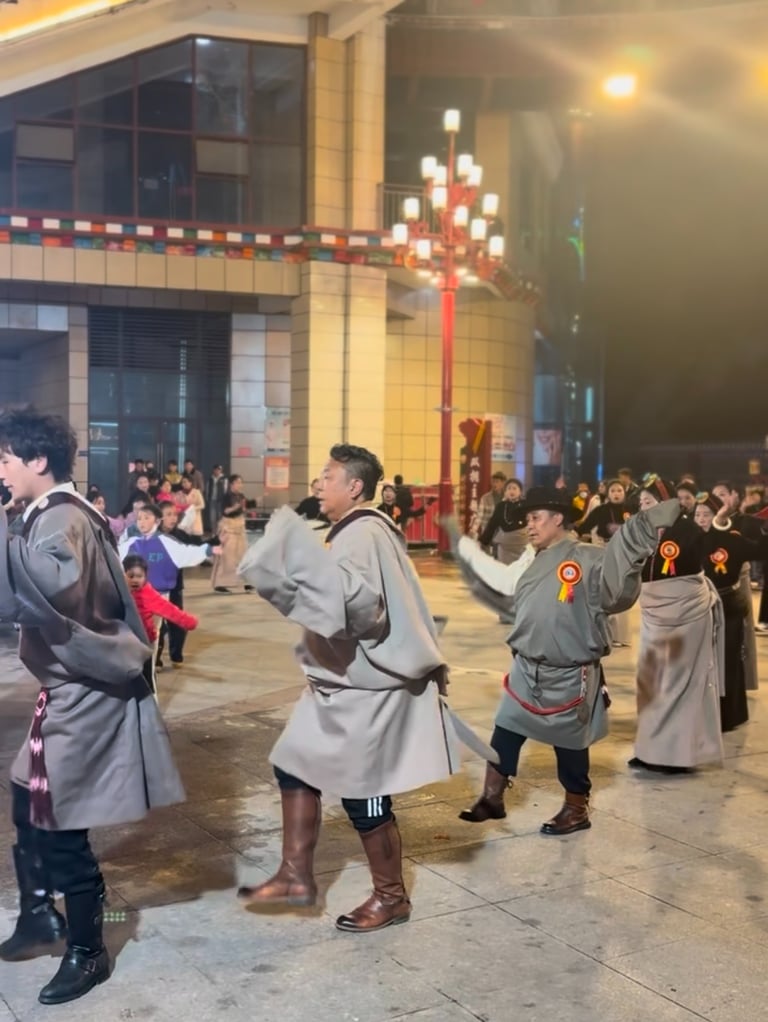

Day 6 - Dege to Dzongsar Valley
Reaching the Dzongsar Valley required a bit of backtracking following my mistake the previous day. I had to drive back for about an hour before turning onto a side valley. The following hours were spent navigating along a river, occasionally being slowed down by road construction. The scenery on this day was dramatically different, with a distinct feeling of entering a truly remote region of Sichuan. I encountered only a few small villages along the way. Lush forests lined much of the river, their leaves beginning to turn vibrant shades of autumn.
My destination was Khyenle Guesthouse, highly praised by a fellow (Chinese) traveler I met in Litang. While slightly pricier than other options in China (rooms starting at 300 CNY with shared bathroom and 400 CNY with en-suite bathroom and breakfast - but I got "upgraded" since I was the only guest), Khyenle quickly became my favorite accommodation of the entire trip.
Firstly, the warm hospitality of the family-run guesthouse was a refreshing change. Secondly, the rooms were impeccably clean and even equipped with electric heaters, a rare luxury in Sichuan where temperatures can drop significantly at night. Thirdly, the owners were both fluent in English (the husband also speaks French), allowing for easy communication and a deeper cultural exchange. In fact, Khyenle is more than just a guesthouse. It's first and foremost a renowned Tibetan Bronze Art center, with one of the owners having previously worked at the Smithsonian Institution in Washington D.C. Numerous documentaries have been filmed about this workshop.
The guesthouse itself is beautifully situated in a valley offering numerous hiking opportunities, including a rewarding hike to the top of the hill behind the property. A short drive away also lies a breathtaking meditation retreat nestled on a mountaintop.
Finally, I highly recommend dining at the guesthouse. While slightly more expensive than your average meal in China (75 CNY with drinks), the quality of the food and the unique dining experience made it an absolute highlight. I enjoyed a delicious multi-course meal with the entire family, savoring a variety of dishes prepared with love (and chilies!).
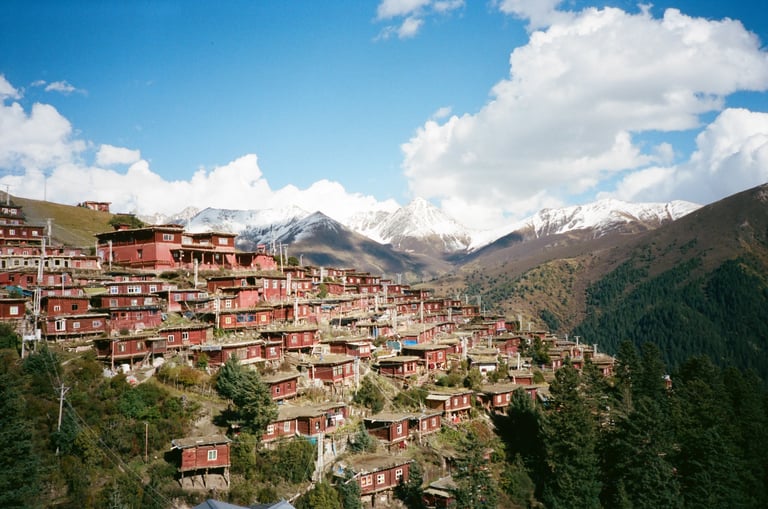

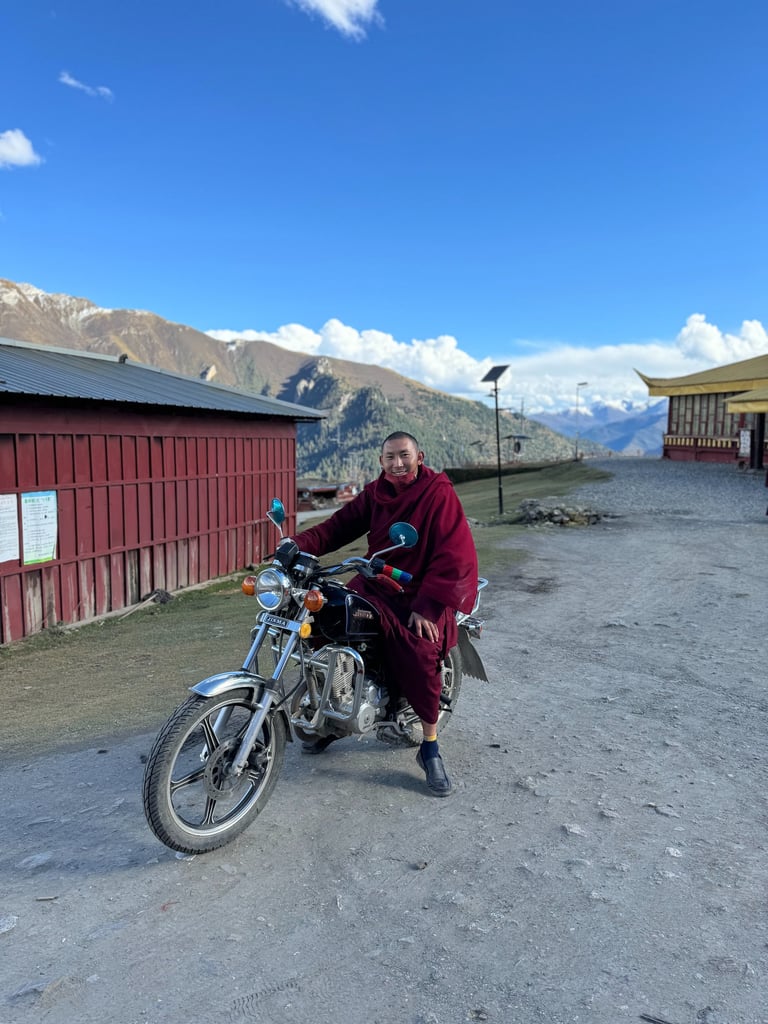

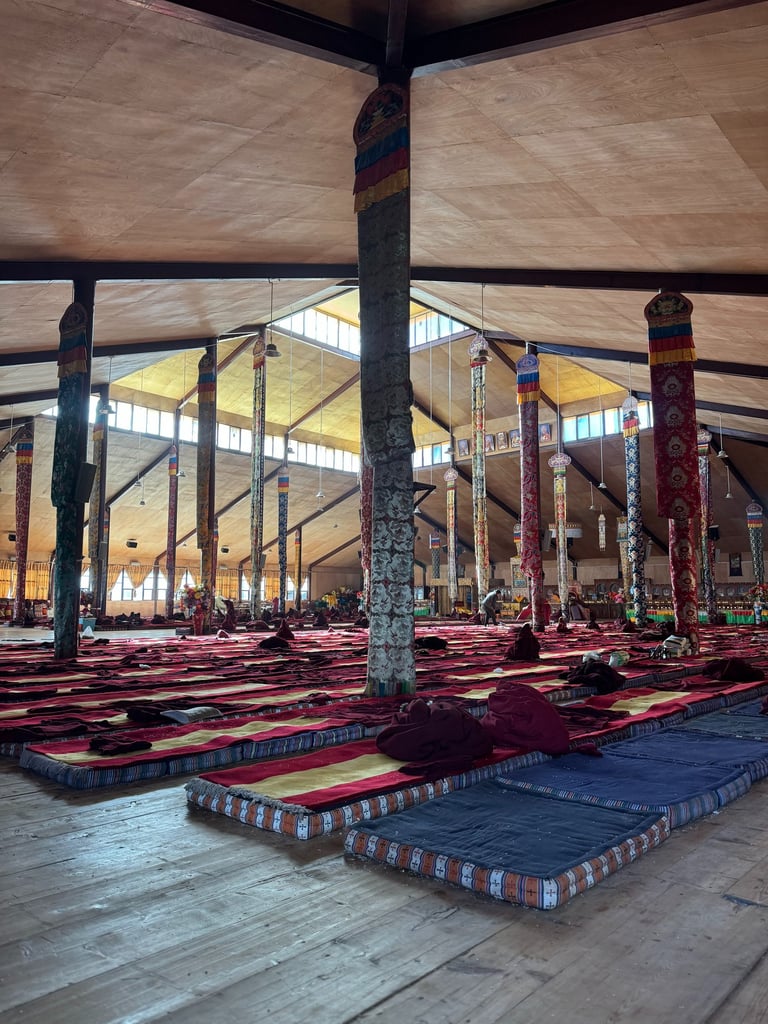

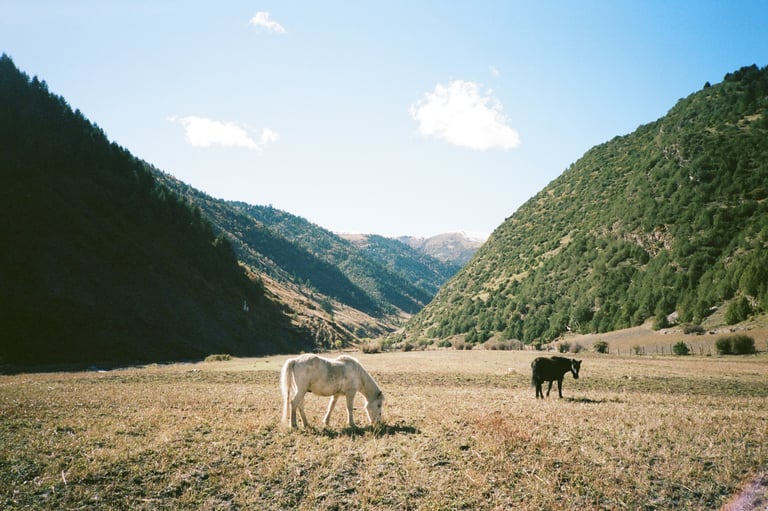

Day 7 - Dzongsar Valley to Cuo'a
My initial plan was to reach Garze on Day 7, however, issues with the charging stations in Dzongsar pushed back my departure until 4 PM. With the fading light, I decided to spend the night in Cuo'a, a small town located about an hour before Garze as driving after dark in this region, with its ever-changing and breathtaking scenery, would have been a true shame.
The drive towards Cuo'a was, once again, spectacular. Despite being late on schedule, I had to pull over repeatedly to capture the ever-changing landscapes. I stayed at the brand new Yulong Hotel in Cuo'a, a comfortable and modern option.
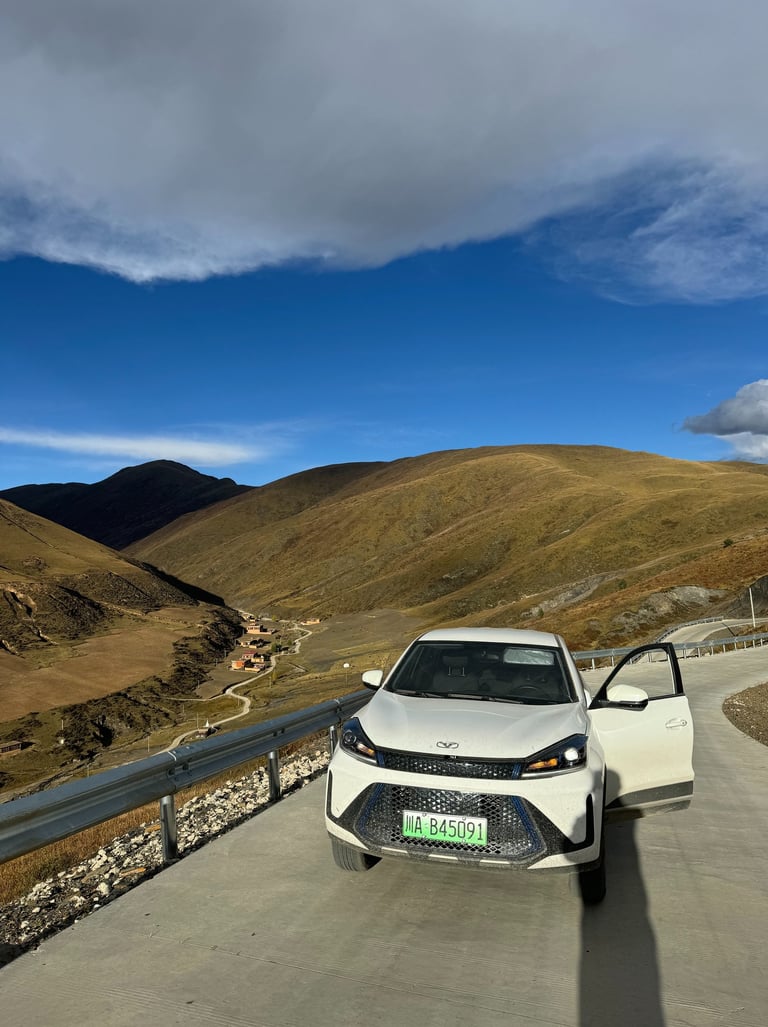

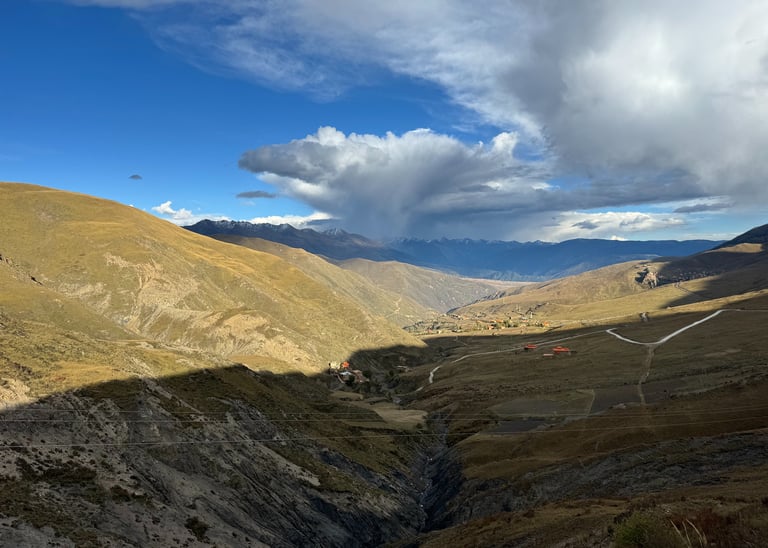

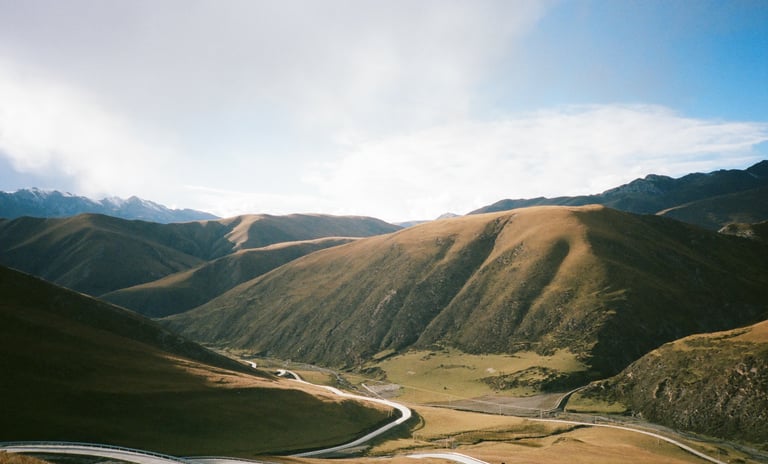

Day 8 - Cuo'a to Xian d'Aba
Day 8 was a long driving day, spanning over seven hours. The initial portion of the drive, for the first hour or two, offered some pleasant scenery with glimpses of beautiful monasteries. However, the remainder of the journey was less visually engaging, with the road conditions deteriorating somewhat. While not treacherous, the road surface was uneven in sections, a departure from the generally excellent road conditions experienced throughout much of the trip.
Given the less inspiring scenery, I didn't capture many photographs on this day.
Finding a hotel in Xian d'Aba was an whole experience. Prices on Trip.com were significantly higher than those listed on Ctrip, the Chinese booking platform. Opting for the better deal, I booked a room through Ctrip. However, upon arrival, the receptionist informed me that the hotel wasn't authorized to host foreign guests (the true reason is that many hotels simply don't know how to register foreign nationals). I was aware of a recent regulations which require all hotels in China to accommodate foreigners though. Armed with this knowledge and a trusty Google Translate, I politely insisted on staying at there. After some/a lot of back-and-forth, the receptionist contacted the local police. Thankfully, an officer arrived within half an hour and facilitated the registration process. The entire ordeal took nearly two hours, but looking back, it was a somewhat amusing cultural encounter (but I would not go through it every day, so stick to Trip.com if you can).
Day 9 - Xian d'Aba to Chengdu
The last day on the road was a relatively short but a rather uneventful drive. I quickly joined the highway, which would remain my companion for the rest of the journey. The highway was well-maintained, but also heavily monitored with a seemingly endless array of speed cameras. To avoid hefty fines, I was forced to maintain a relatively slow pace, despite the lack of traffic, as the system tracked average speed over extended distances.
This final leg of the journey was therefore more about covering ground than sightseeing.
Conclusion
This road trip through the Tibetan Plateau of Western Sichuan remains one of the most unforgettable journeys of my life. The sheer remoteness of the region, coupled with the raw cultural experiences, created a truly unique and unforgettable adventure.
From the awe-inspiring landscapes – snow-capped mountains, crystal-clear lakes, and vast grasslands – to the delicious and spicy local cuisine, every moment of the trip was a sensory feast.
